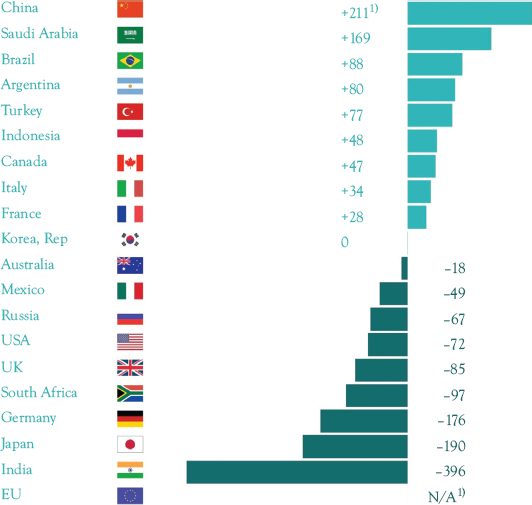Digital Economy
The free movement of people between countries has been greatly restricted after the outbreak of the coronavirus disease (COVID-19). In the face of the slowdown of the gross domestic product (GDP) growth in various countries, what will be the biggest increment in the world in the future?
It is the digital economy. According to Statista, digital transformation (DX) spending is expected to reach $1.8 trillion by 2022. By 2025, global digital transformation spending is expected to reach $2.8 trillion.1

Spending on digital transformation technologies and services worldwide from 2017 to 2025 (in trillion U.S. dollars)
Source: Statista February 16, 2022.
Global Digital Competitiveness Ranking
Under the influence of the black swan of COVID-19, most countries are increasing their investment in the digital industry. The World Economic Forum has released a research report in 2021, analyzing and ranking the changes in digital competitiveness of countries around the world over the past three years. Based on the data from the World Economic Forum’s Global Competitiveness Report and supporting data from the World Bank and the International Telecommunication Union, the report proposes two core dimensions to measure a country’s digital competitiveness: digital ecosystems and mindset.2

The World Economic Forum’s Global Competitiveness Rankings
Source: World Economic Forum.
The concept of digital economy has gradually changed from digital enterprise to a deep integration with all walks of life. In December 2021, the State Council of China issued the 14th Five-Year Plan for the Development of the Digital Economy, which defines the digital economy as follows:
The digital economy is the main economic form after the agricultural economy and industrial economy, with data resources as the key element, modern information network as the main carrier, the integration of information and communication technology applications, the digital transformation of all factors as an important driving force, and promote fairness and efficiency of the new economic form with more unified efficiency.
The plan pointed out that the proportion of the added value of the core industries of the digital economy to GDP will increase from 7.8 percent in 2020 to 10 percent in 2025. According to estimates by Wu Chaoze, director of the CITIC Capital Securities Research Institute, based on an average annual growth rate of 5 percent in China’s GDP, by 2025, the added value of the core industries of the digital economy will reach 13.8 trillion yuan (about 2.17 trillion U.S. dollars), an increase of nearly six trillion yuan (around 0.94 trillion U.S. dollars) over 2020.3
The core industries of the digital economy include 5G as the information infrastructure, as well as key technologies such as chips, Internet of Things (IoT), artificial intelligence (AI), autonomous driving, robotics, quantum computing, and so on. I will answer hot questions in related fields in the subsequent chapters.
